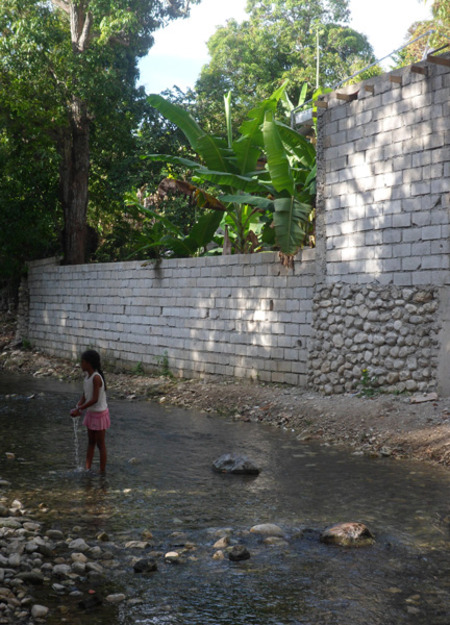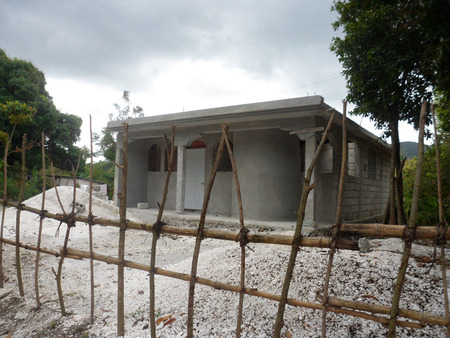Visit to Fond-des-Blancs, Haiti
 Friday, February 10, 2012 at 1:13PM
Friday, February 10, 2012 at 1:13PM Culture
Upon arrival to Fond-des-Blancs, after a 4 hour bus ride that covered only about 70 miles, we knew we were in for a culture shock. The comforts of home, like readily available water, electricity, air conditioning, etc, were nowhere to be found. The house we stayed was connected to a generator to provide some of these things, but only for about an hour a day.
Group gathered outside Jean and Joy's guest house (where we stayed). Photo by Cassidy Barnett
During our daily activities, most of which consisted of walking or hiking, we were able to witness the daily life of the Haitian people living in Fond-des-Blancs. Although we were able to witness, it was very hard for us to relate to and understand. For some, much of the day was spent traveling (by foot or donkey) to gather clean water, which often came from nearby streams. In the same streams, sheep, chickens, donkeys, and cattle drank while the women washed their clothing in it.
 Local women washing their clothing in the stream. Fond-des-Blancs, Haiti. Photo by Cassidy Barnett
Local women washing their clothing in the stream. Fond-des-Blancs, Haiti. Photo by Cassidy Barnett
The market was an unforgettable experience, in many aspects. There were no storefronts, credit card machines, or cash registers. Many items were laid out on a cloth on the dirt, while some had wooden tables under a tent. Women worked and sold most of the items at market, while men and women of all ages crowded the market’s main cross-section.
 Fond-des-Blancs market. Photo by Zach Smith
Fond-des-Blancs market. Photo by Zach Smith
We stuck out worse than a sore thumb. Unlike in the city, where aid relief and tourism is common, many people of Fond-des-Blancs rarely see groups of white people.
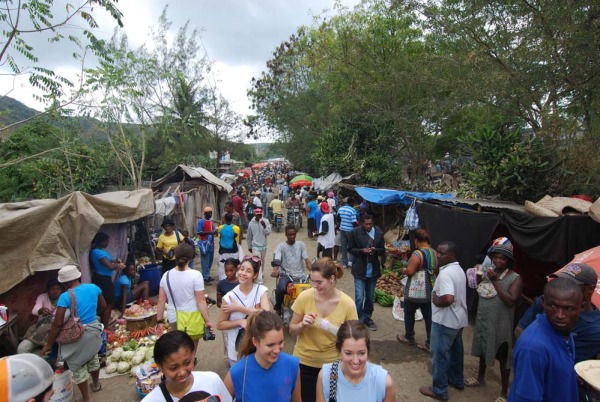 Some of our group walking through the market. Photo by Zach Smith
Some of our group walking through the market. Photo by Zach Smith
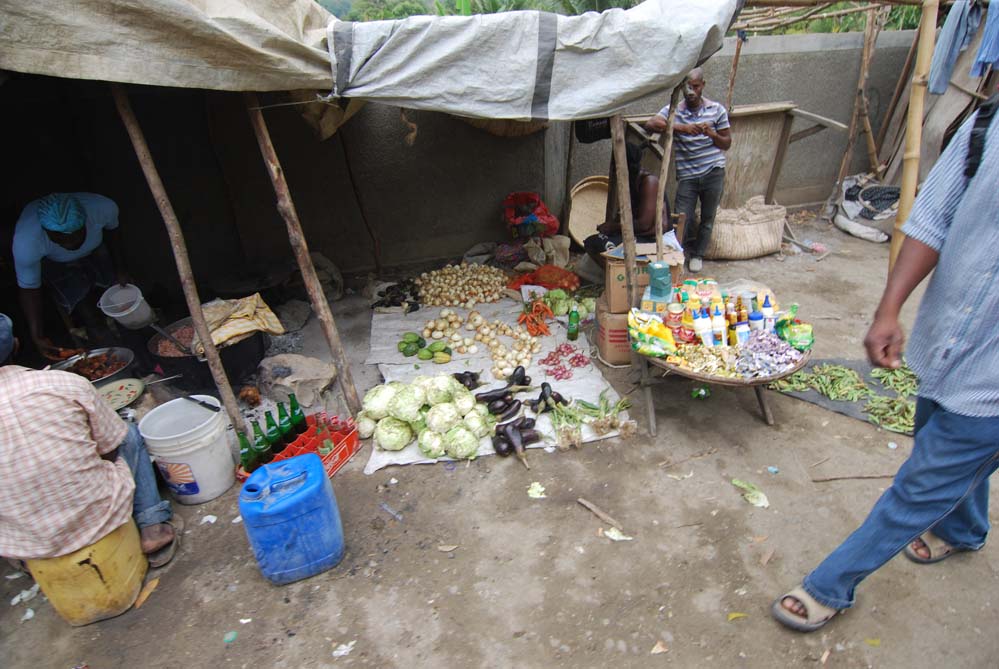 Fond-des-Blancs market. Photo by Zach Smith
Fond-des-Blancs market. Photo by Zach Smith
Motorcycles and cell phones were a phenomena that it still a mystery to us. In a country where people barely have enough money to eat and drink clean water, they have cell phones and many have motorcycles.
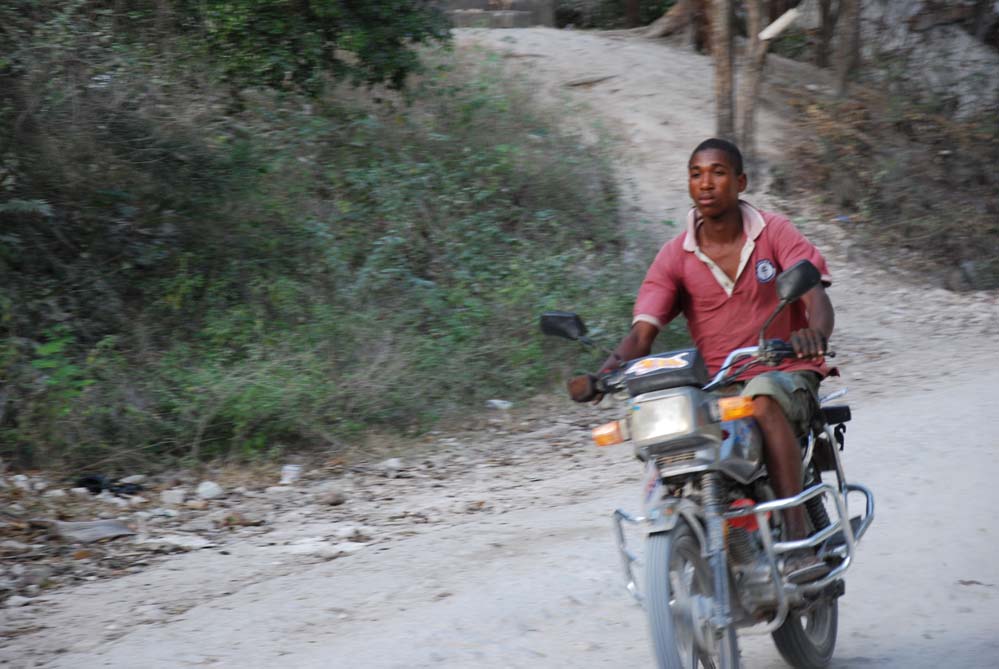 Photo by Zach Smith
Photo by Zach Smith
Many of these cultural aspects are foreign and hard for many of us to understand. As we returned home, we felt as though we had a good understanding of daily life and living quarters of the people of Fond-des-Blancs, Haiti.
Site Overview
During our site visits, it was immediately apparent to us that the parameters of the site were smaller than we had envisioned. The west side of the site has slopes on each side of the stream much steeper than we originally thought. The vegetation is lush, with many different types of trees and shrubs.
Site boundary at stream crossing. Photo by Cassidy Barnett
A group palm trees at the front of the site creates a natural shaded area.
Palm trees. Photo by Cassidy Barnett
There are also several cleared-out areas, as seen below.
 Photo by Zach Smith
Photo by Zach Smith
 Culture,
Culture,  Fond des Blancs,
Fond des Blancs,  Site visit,
Site visit,  market in
market in  Cassidy Barnett,
Cassidy Barnett,  Mitzi Coker,
Mitzi Coker,  Team 2,
Team 2,  Zach Smith
Zach Smith 



